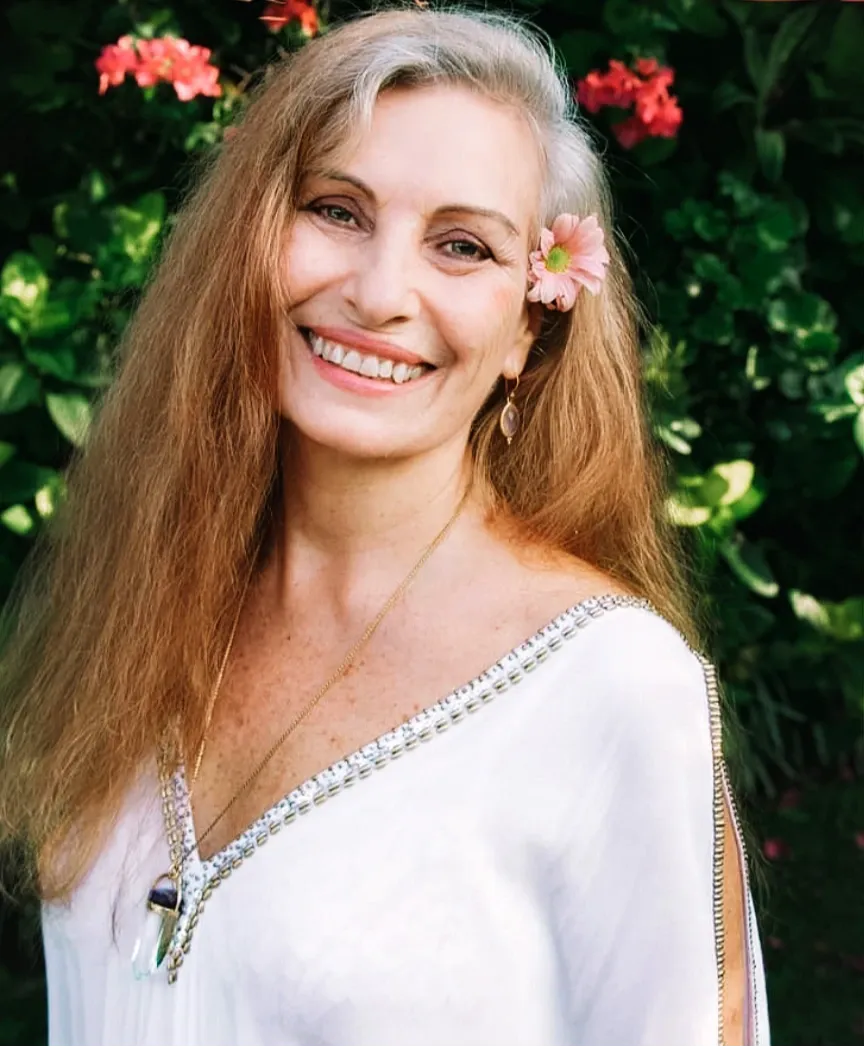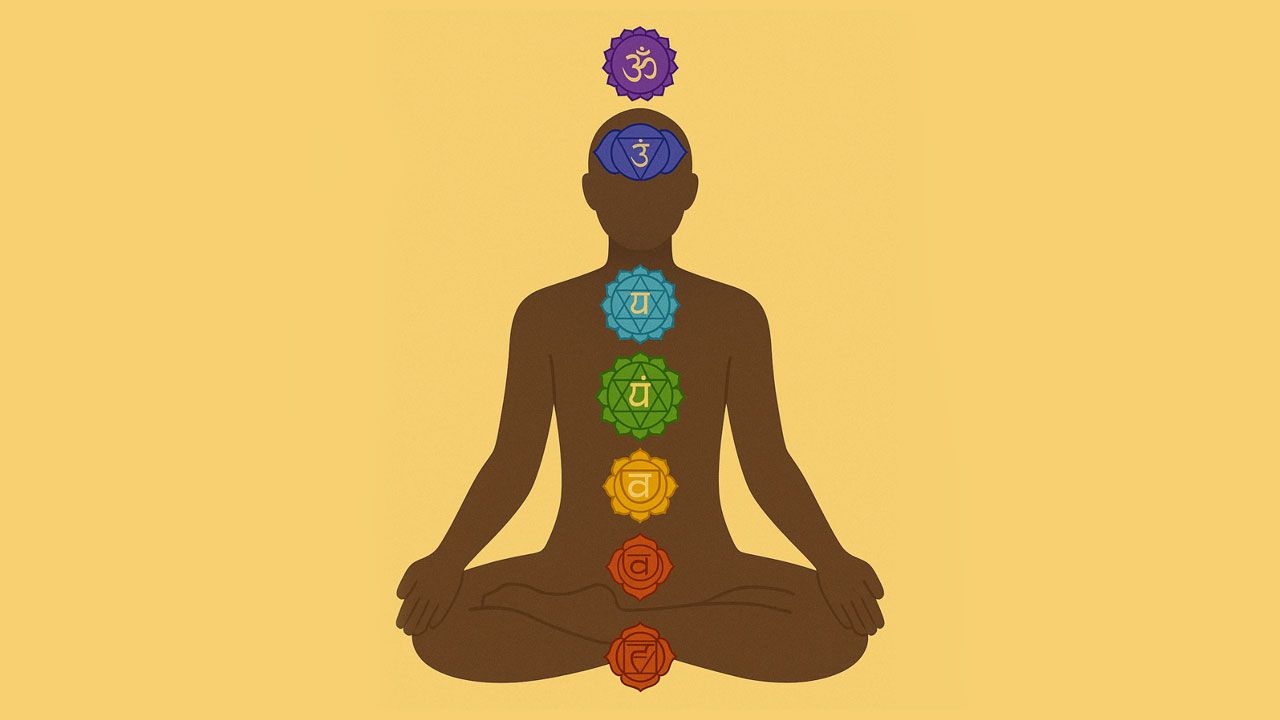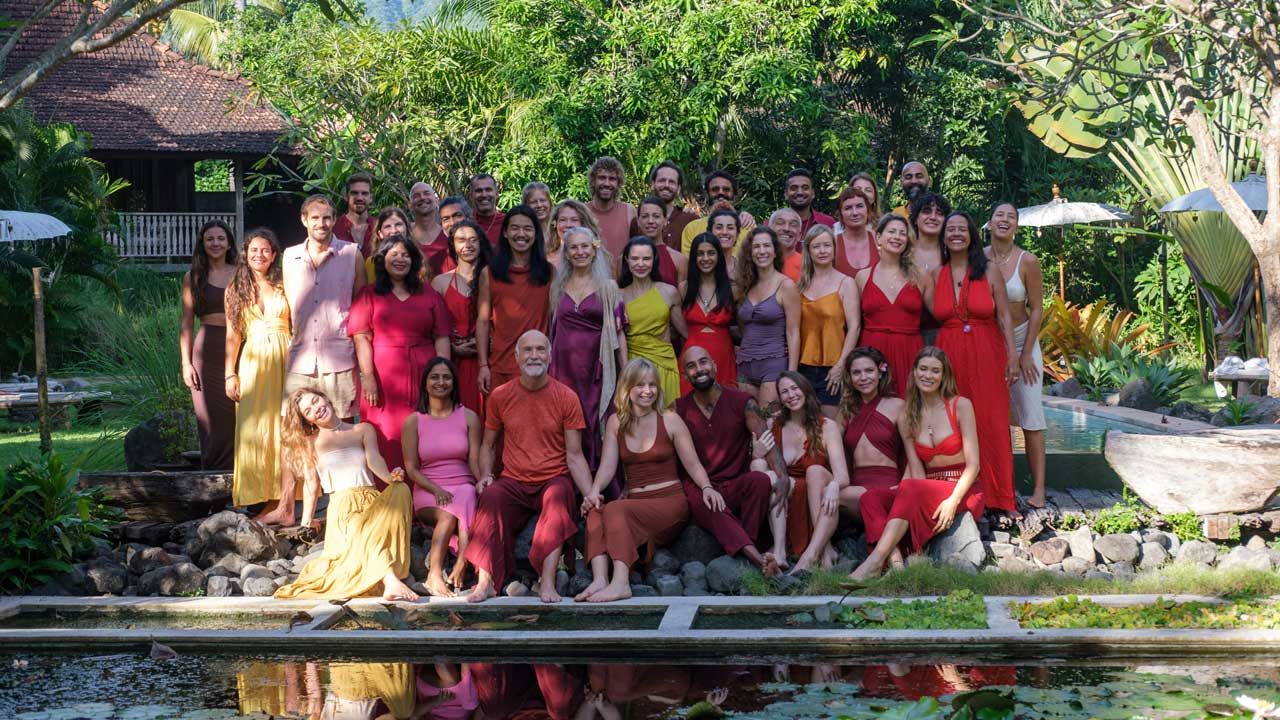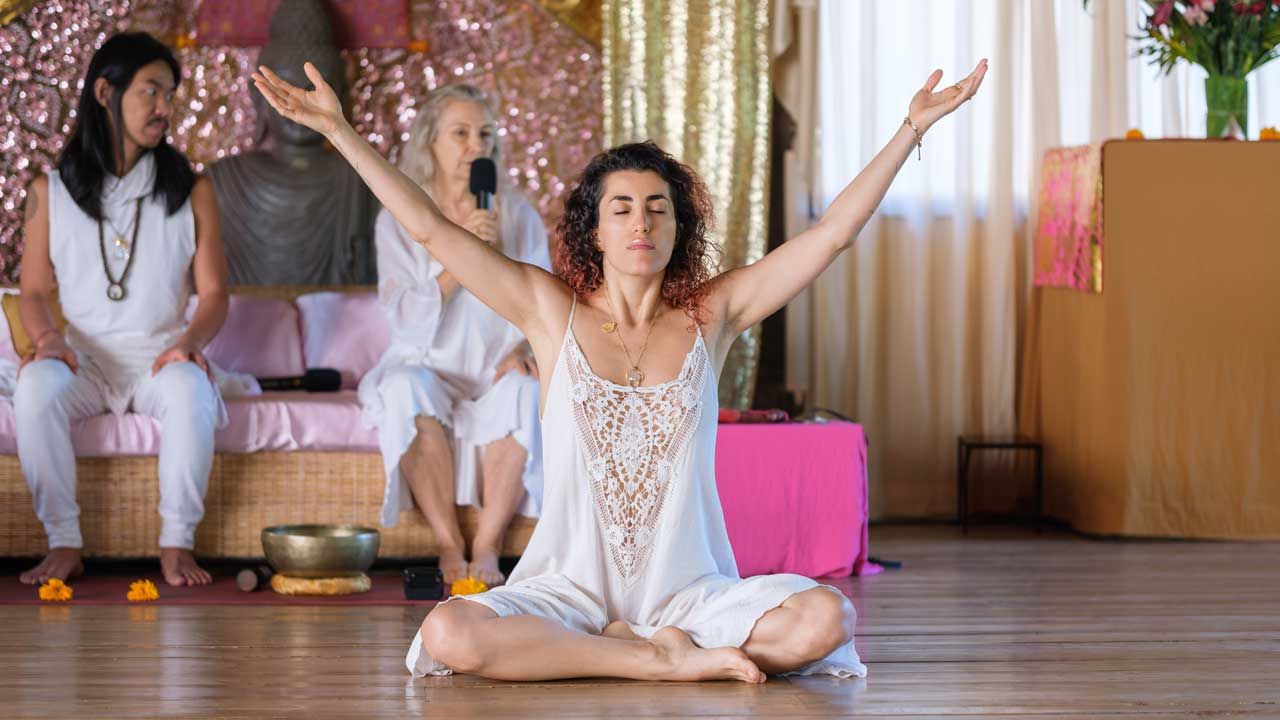Discover the Power of Active Meditation for a Calmer Mind
Jul 29, 2024
Active meditation is a form of meditation that combines physical activity with mindfulness to achieve a meditative state. If you struggle to meditate because you find it challenging to sit still for long, a more energized and involved active meditation might be the perfect alternative to silent sitting meditations.
Benefits of Active Meditation
Reduces Stress, Anxiety, and Improves Mental Health
Active meditation is a powerful ally in the battle against stress and anxiety, offering significant mental health benefits. As you move and focus, you’ll likely notice your worries starting to fade. It’s not just anecdotal - research backs this up.
Studies show that regular practitioners experience reduced activity in the brain’s stress center, leading to a calmer, more balanced state of mind.
Improves Sleep Quality
If you've been counting more sheep than z's lately, active meditation might be your ticket to dreamland. By calming your mind and relaxing your body, it sets the stage for better sleep. Many practitioners report falling asleep faster and enjoying more restful nights.
Aids Physical Health & Fitness
Don’t let the word “meditation” fool you - this practice gets you moving! Active meditation can improve your fitness, balance, body awareness, and overall physical health. It’s a great way to sneak more physical activity into your day, benefiting your overall health without feeling like a chore.
Enhances Happiness and Joy
Want a natural mood boost? Active meditation stimulates the release of feel-good chemicals in your brain. Regular practice of active meditation can lead to increased feelings of joy and contentment. Plus, it helps foster gratitude, allowing you to find more happiness in your daily life.
Boosts Creativity and Focus
If you're feeling stuck or scattered, active meditation might be the key to unlocking your potential. Many practitioners report improved focus and creative thinking. By clearing mental clutter, you're making space for new ideas and sharper concentration.
Strengthens Mind-Body-Soul Connection
Perhaps one of the most unique benefits of active meditation is how it helps you tune into yourself, leading to improved self-awareness. You’ll likely develop a deeper awareness of your thoughts, feelings, and physical sensations. This enhanced mind-body connection can lead to better decision-making and a stronger sense of self.
Awaken Your Inner Goddess!
Join our Unveil Your Inner Goddess online program. Experience fun, empowering active meditations designed to connect you with your inner goddess.
Combining Emotional Fluidity With Exercise and Meditation
Active meditation uniquely blends physical movement, mindfulness, sensory awareness, and emotional awareness. This combination creates a powerful synergy that can help you process and navigate your emotions more effectively.
Integrating Buddhist contemplative practices, such as mindfulness and meditation techniques, can further enhance emotional awareness by promoting relaxation and well-being.
When you engage in active meditation, you’re not just moving your body or quieting your mind - you’re creating space to acknowledge and flow with your emotions. As you move, you might notice feelings bubbling up to the surface. Instead of pushing them away, active meditation encourages you to observe these emotions without judgment.
How to Practice Active and Mindfulness Meditation
To begin active meditation, approach with an open mind and choose a technique that resonates with you, whether it’s walking meditation, dance, or Qigong. Start by focusing on sensory input from your immediate surroundings for about a minute. Start small, with short sessions of 5-10 minutes, and gradually increase duration as you become comfortable. Create a suitable environment where you can move freely without distraction.
Focus on maintaining calm awareness of your body and breath throughout the practice, gently redirecting your attention when your mind wanders. Embrace the experience without judgment, allowing emotions to surface naturally. Consider ending your session with a brief period of stillness for integration. Be consistent with your practice, even if it’s just a few minutes daily, and don’t hesitate to seek guidance from experienced practitioners when needed. Remember, the goal is to cultivate mindfulness through movement, so approach your practice with patience and self-compassion.
Examples of Movement Meditation Exercises
Pillow Beating Meditation

This active meditation technique created by Osho, sometimes referred to as "No" meditation, is a powerful method for releasing pent-up emotions, bringing more vibrant energy to the body and reducing stress and tension. It is best practiced every day for 10 days. Here's a step-by-step guide:
Step One: Release (3 minutes)
- Kneel in front of a sturdy pillow, ideally one reserved for this practice.
- Raise your arms above your head, with clasped hands.
- Bring your clasped fists down forcefully onto the pillow, as if hammering.
- As you strike the pillow, shout "No!" with full intensity.
- Continue this process for 2–3 minutes, using 100% of your energy.
- Be total in your expression - let go of any inhibitions.
Step Two: Witness (5 minutes)
- After the active phase, sit comfortably in front of the pillow.
- Close your eyes and remain silent.
- Become a witness to your inner experience:
- Observe your breath without trying to control it.
- Notice the flow of energy in your body.
- Be aware of any emotions that arise.
- Watch your thoughts without getting caught up in them.
- Maintain this state of silent witnessing for 5 minutes.
Step Three: Completion
- To conclude the meditation, bow down to the pillow.
- This act symbolizes respect for the process and marks a clear end to the practice.
Laughing Meditation

Laughter is often called the best medicine, and for good reason. This simple yet powerful form of active meditation, practiced by some Tibetan monks, can be a fantastic way to start your day and boost your overall well-being.
Four-Minute Laughing Meditation
This practice, created by Osho, is meant to be done first thing in the morning, for 21 consecutive days to experience its full benefits. Here's how to do it:
- Morning Stretch (1 minute):
- Upon waking, before opening your eyes, stretch your entire body.
- Imagine you're a cat waking from a nap - stretch luxuriously and allow yourself to yawn deeply.
- Laughter (3 minutes):
- Begin to laugh from your belly, letting it spread throughout your body.
- Allow your laughter to grow louder and more intense.
- Continue for a full three minutes, letting the laughter flow naturally.
- Begin Your Day:
- Open your eyes and start your day, carrying the positive energy with you.
Key Points:
- Seriousness is viewed as a kind of "disease" that can make life seem dull and heavy.
- Laughter is a way to connect with the "cosmic joke" of existence.
- The saying "Laugh, and the world laughs with you. Cry, and you cry alone" underscores the contagious nature of joy.
Tips for Practice:
- Commit to 21 days to fully experience the impact on your life.
- If genuine laughter doesn't come easily at first, start with a playful laughter - your body and mind will often follow suit.
- After the 21-day period, you can continue daily or use it as needed.
- Remember, it might feel awkward at first, but allow yourself to be playful and childlike.
Chakra Dance Meditation
This one-hour active meditation created by Ma Ananda Sarita is a powerful way to celebrate your life energy while opening and balancing your chakras. By bringing awareness to your body movements, you can create profound transformation. Here's how to practice this meditation:
Phase One: Dancing the Chakras
For each chakra, spend about 7 minutes dancing its quality. Start from the first (root) chakra and work your way up to the seventh (crown) chakra:
- For the Root Chakra, focus on your pelvic region and dance qualities of grounding, stability, and security. Let the energy radiate throughout your body
- For the Sacral Chakra, shift focus to your lower abdomen and express creativity, sensuality, and emotion in your movements.
- For the Solar Plexus Chakra, concentrate on your upper abdomen and dance with confidence, and all inclusiveness.
- For the Heart Chakra, center on your chest area and move with love, compassion, and harmony
- For the Throat Chakra, focus on your throat and the expression of truth and creativity through dance.
- For the Third Eye Chakra, bring awareness to the center of your forehead and dance with the embodiment of intuition, wisdom, and insight.
- For the Crown Chakra, focus on the top of your head, and move with spirituality, connection, and higher consciousness.
- For each chakra, begin by focusing on the specific chakra location and allow the energy to expand from that point. Let the chakra's quality overtake your entire body and dance freely, expressing what each chakra means to you personally.
Phase Two: Integration
After dancing through all seven chakras, give yourself about 15 minutes to do the following:
- Lie down comfortably
- Close your eyes
- Witness your breath, thoughts, and emotions as a detached observer
- You may become aware of all seven chakras vibrating simultaneously

Discover Divine Sexuality
Explore Ma Ananda Sarita’s book, Divine Sexuality, filled with many active meditations to try and inspire you.
Walking Meditation

Walking meditation is a simple yet profound practice that combines the physical act of walking with mindfulness. It is best practiced after doing a silent sitting meditation. In the zen tradition, silent sitting meditation is done for 40 minutes followed by 20 minutes of slow, conscious walking meditation.
How to practice:
- Select a quiet place where you can walk back and forth for about 10-15 paces.
- Begin by standing at one end of your path, taking a moment to become aware of your body and breath. Place your right hand inside of your left hand at the level of your lower belly.
- Begin walking slowly and consciously. Pay attention to the sensations in your feet and legs as you move.
- Notice the lifting, moving, and placing of each foot. Feel the contact with the ground.
- If your mind wanders, gently bring it back to the sensation of walking.
- When you reach the end of your path, pause, turn slowly, and continue walking in the other direction.
- Practice for 10-20 minutes, or longer if you wish.
Nataraj Meditation
This Osho Active Meditation is called Nataraj, which means "Lord of the Dance," This is one of the names of Shiva, who created the world through dance. Both men and women can practice this meditation. Entering totally into the experience of both phases will bring balance, helping Yin and Yang to merge inside you. This meditation will empower you to become the creator of your own destiny.
- Dance ecstatically for 40 minutes. Become the Shiva Linga, dancing the stars, the sun and the moon, the trees and the plants, the mountains and the sky, and the animals. Become one with the power that creates the whole of life.
- Lie down for 15 minutes in complete stillness and let go.
- Get up and dance again softly for 3 minutes, bringing integration.
Osho Dynamic Meditation
Osho Dynamic Meditation offers a blueprint for the 5 stages of spiritual evolution, condensed into a one hour active meditation. These 5 stages are: 1) breath, (activating every cell in the body with a vibrant aliveness) 2) conscious emotional fluidity (this is a prerequisite for kundalini awakening) 3) Kundalini activation leading to higher consciousness states, (achieved through jumping and mantra) 4) silence and stillness leading to meditation 5) gratitude and celebration (through dance.) It is important to practice each stage of this meditation as it is described. Music for this meditation can be ordered from Osho.com
- Stage One: Breathing and Body Movement (10 minutes)
- Stand with your eyes closed.
- Breathe rapidly and chaotically through your nose.
- Move your whole body as you breathe, bending your knees.
- Pump your arms like bellows, which helps to open up the lung capacity for vibrant breath.
- Focus on your breathing and movement.
- Stage Two: Catharsis (10 minutes)
- let go and allow madness with method through breath, movement and sound. You may like to beat a cushion, or dance, or scream, or laugh or do gibberish. Allow all repressions to be released harmlessly in the air or on a cushion.
- Stage Three: Jumping and Shouting "Hoo" (10 minutes)
- Jump up and down, shouting "Hoo!" each time you land.
- Put all your energy into this, letting the sound come from your pelvic floor.
- Keep your arms raised as you jump which invites an inward and upward movement of your vital energy.
- Stage Four: Freeze (15 minutes)
- Stop suddenly, wherever you are and in whatever position.
- Don't move at all. Become completely still.
- Keep your eyes closed and focus inward.
- Be a witness to whatever is happening inside you in deep silence.
- Stage Five: Gratitude & Celebration (15 minutes)
- Dance in gratitude and celebration for this new day.
- Let your movements be free and joyful.
- Your eyes may be open or closed as you continue dancing.
- Celebrate your existence and the energy you've awakened.
Mahamudra Meditation
Mahamudra is the Tantra term describing the highest state of consciousness possible. It means "the great gesture", which arises out of the Ultimate Orgasm with the Universe. This meditation, described by Osho, is a very powerful catalyst to propel you into the experience of Mahamudra. Osho recommends practicing it every day for three months for optimum results.
- Standing in a loose and relaxed way, close your eyes and raise your arms toward the sky. Be open and available for the divine energy of existence to softly move your body. You are not the one who is moving: your body is being moved like a leaf in a breeze or like seaweed in the ocean currents.
- You may find your body taking strange shapes as an unwinding process begins. Allow this unwinding slowly to empty you of all subtle tensions and attune you with source. This first phase is 40 minutes.
- Kneel on the ground or on a fairly flat cushion, arms raised, hands up toward the sky. Imagine your body is an empty vessel and the divine energy of existence is pouring in through the top of your head, filling you to overflowing. If your body needs to tremble and shake or make sounds that is fine. When you feel completely filled, bow down, head to the ground, and empty yourself into the Earth. When you feel completely empty, start the cycle again.
- Repeat the full cycle of filling and emptying at least seven times. Each cycle takes approximately 3 minutes and will penetrate and open one chakra. You should not do it less than seven times, otherwise you will be left incomplete.
- When you bow down for the final time, as a completion of the meditation, lie flat on the ground, arms stretched above your head, if possible with your bare belly against the Earth. Rest like this in silence for 5 minutes. It is very good if you can end this meditation with three hits on a Tibetan Singing Bowl.
Integrating Active Meditation Into Daily Life
- Start with short sessions, even just 5-10 minutes
- Use lunch breaks or commute time for walking meditation
- Practice mindful movement while doing household chores
- Set a regular time each day for your practice
Integrating active meditation into your routine can be a key component of a healthy lifestyle, offering benefits such as less blood pressure, improved mental health, healthy sleep, positive self-image, and enhanced attention span.
Many Eastern philosophies emphasize the importance of staying in the present moment and shifting focus from unpleasant thoughts to sensory awareness. Incorporating these principles into your daily routine can enhance the effectiveness of your meditation practice.
Choose a meditation you like and try it for three days every day. If you feel good practicing it, continue practicing it for 21 days. Each meditation has a special nectar to deliver to you. Once you have absorbed the nectar, then the work of that particular meditation is done. Some meditations need to be done for 21 days while for some people, the nectar will be absorbed with 3 months of practice, or even longer.
Conclusion: Embracing Active Meditation
In a world that's always pulling us in a million directions, active meditation offers a precious opportunity to fully inhabit the present moment. As you practice, you'll find that this ability to be present isn't limited to your meditation time – it starts to infuse every aspect of your life, allowing you to fully experience and appreciate each moment as it comes.















